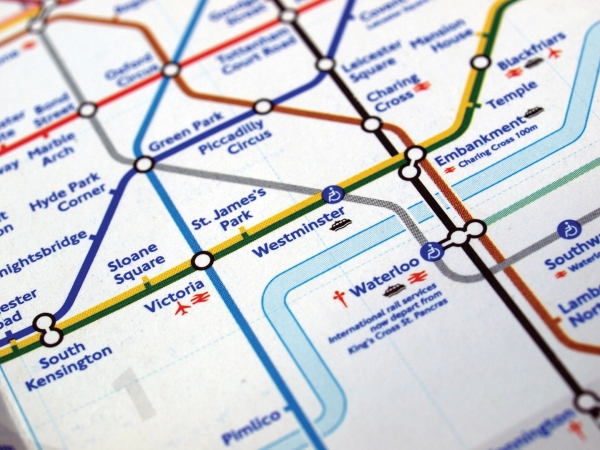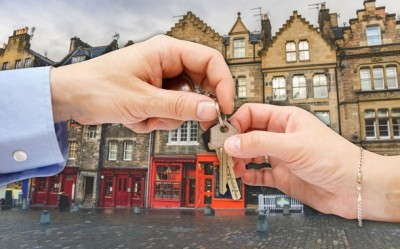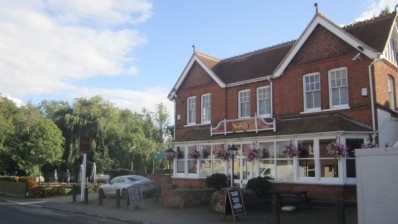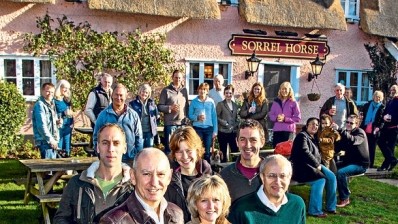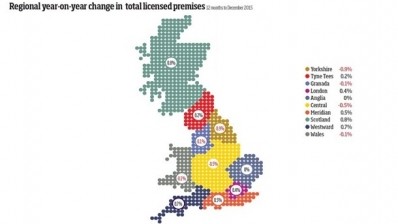Analysis
So you want to run a pub in London? Pub property in the capital explained
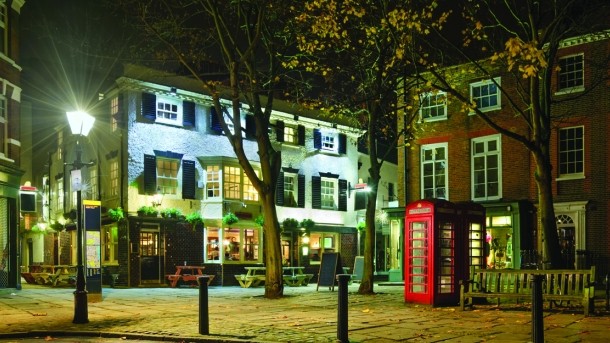
“When a man is tired of London, he is tired of life,” chimes Dr Samuel Johnson in a phrase that perfectly encapsulates our capital’s unending popularity and tractor beam-like attraction to the hospitality industry.
Unsurprisingly, everybody who’s anybody wants to own a little piece of metropolis as demand continues to comfortably outstrip supply.
Commercial property in London is more sought-after than ever but, notably, demand is starting to spread throughout the boroughs — central London is no longer the be all and end all as a growing number of hot spots are appearing across all corners of the city.
Indeed, new research from property adviser AG&G found the price paid per square foot for freehold pubs across outer London (outside Zones 1 & 2) doubled last year from £178.64 in 2014 to £356.67, while price paid per square foot for freehold pubs across Zones 1 & 2 fell from £805.45 to £616.55.
The most pleasing trend, however, must be that just under half of the pubs sold by AG&G remained as public houses — a positive step towards steadying the rocking ship of pubco disposals.
So you want to run a pub in London? Your first foray into ‘the big smoke’ is a big step — here’s what you should consider.
Property hot spots
Higher entry costs and competition between established groups for prime locations means start-up operators are finding it increasingly hard to enter the sector.
However, there are many opportunities in up-and-coming areas where independents with local knowledge and fine-tuned, well implemented business plans are thriving.
The ability to acquire a freehold in ‘the sweet spot’ between it being fashionable and property value being unattainable is mostly a guessing game but there are clear signs in the market of where is on the rise.
Chris Bickle, director of licensed leisure at Savills, agrees: “It’s a more risky to move in ahead of the residential growth but the rewards may be greater as a result — the likes of Antic London Ltd have been extremely successful in adopting this tactic.
“Due to London’s size and the speed at which gentrification moves across boroughs, commercial hot spots can pop up almost anywhere.
“However, these areas tend to be experiencing growth due to transport improvements or are benefiting from the likes of Crossrail.
“Much interest has been centred on south-east London of late with demand for areas like Peckham encouraging people to look elsewhere into neighbouring areas and further afield.
“In the east, previous up-and-coming areas of Hackney and Clapton are firmly on the map; start-up costs are comparable to central areas now. As a result, eyes are moving further east down the line to the likes of Stratford.”
Head of pubs & bars team at Davis Coffer Lyons, Paul Tallentyre, says: “Central London will continue to thrive but those areas that are seeing improved demand are areas close to or at the end of tube lines, such as Ealing or Epping.
“Earls Court, Battersea and areas around north London like Tottenham are being primed for some significant development schemes and so operators should be keen to snap up sites in these locations to reap the effects.”
24-hour underground service
As a new transport infrastructure continues to positively impact growth in certain London areas, the imminent arrival of the 24-hour Tube service may also impact on property and in particular licensing.
Tallentyre says: “The potential effect of the 24hr TfL (Transport for London) service is expected to be largely positive, with those who live further out of central London, towards the end of the Tube lines, may be inclined to visit pubs and bars more and for longer.
“However, pubs will face issues from councils when their licensing is up for review if there are any resulting problems with drink-induced violence on the underground, as we have seen recently with cases in Leicester Square.
“Ultimately though, the changes to the TfL services won’t affect how much people have to spend in their back pocket every month, so we don’t expect a dramatic impact on the pub sector as a result.”
Bickle argues that London, as a whole, may not see the benefit, rather a returning focus on the centre of the capital: “If the improved transport services mean more customers are staying in venues and, therefore, revenues and profit are improved, then there is clearly an opportunity to argue value has been added.
“However, it is likely better transport links will encourage people to stay out in the hubs of the central London; that may, of course, mean fewer come back to socialise at their local pubs, bars and restaurants.”
Clientele who are community-minded, though, may be less likely to stay in centre locations, which, perhaps, suggests that community pubs could have a growing place in outer London.
Licensing
Licensing is an equally crucial factor to consider, both in terms of the ability to trade without restrictions and to avoid any complaints from your neighbours.
Particularly for pubs in residential areas, relationships with neighbours and the community are key — when taking over a business, it is best for new operators to engage directly with local groups and individuals to make sure they are being considered.
Repositioning a sleepy local, and growing the business is fantastic to create value but it may cause issues with residents. After all, it only takes one complaint to cause irreparable damage to reputation.
When taking on a new business, the premises licence may be a red flag to warn you of historic licensing issues and how active the local residents are.
Bickle says: “Whether in a neighbourhood or central London location, making sure your licence allows you to be competitive is key, particularly with the terminable hours and use of outside space.
“It is worth bearing in mind that, for some operators, not much business is actually achieved post 11pm, so are the extra associated costs and risks worth it?”
Maximising investment
In light of market rent-only option (MRO) developments, the ability to achieve a return on investment is greater than ever — something that has created added impetus on the relationship between the tie and lease term for tenants.
The broadened reach of so-called craft beers, in particular, has seen this niche product become part of mainstream consciousness, increasing demand for smaller brewers alongside established favourites. The result of this has meant that ‘craft’ is not so much a point of difference but a driving factor in why punters step through the door.
On-site microbrewing is still in small numbers in the city and could represent a better opportunity to stand out.
With operators seeking additional ways to maximise revenue from their properties, additional space is increasingly valuable — especially ‘uppers’, rooms that can be used for short-term lettings or hotel rooms.
Indeed, occupancy rates in some of London’s best pub hotels are very strong, as London’s appeal as a world-class tourist and business centre grows unabated.
